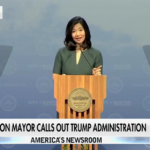Global markets are always changing, but the Trump administration’s policies created a lot of instability, and we are still seeing the impact today. While some believed these policies would solve long-term problems, many people felt worried and faced financial difficulties. Planning for the future became tough, both here and overseas. Trade policy was a big source of uncertainty. The Trump administration often put tariffs on goods from major trade partners like China, Canada, and the EU. These actions usually came without much warning, which made it hard for companies to change their supply chains fast enough. Farmers, who needed to export to China, lost a lot of money with tariffs on soybeans and other crops. The goal was supposedly to protect American industries and lower trade deficits, but the unpredictability made companies careful. They waited to invest because they didn’t want to be caught off guard by the next policy change.
Financial markets prefer stability, but the Trump years were often rocky for investors. A single tweet could make the Dow jump or fall fast. Disagreements with the Federal Reserve about interest rates made things even more unclear, as people tried to figure out what was really going on between Washington and the central banks. Some investors made money off the quick changes, but for pension funds, retirement savers, and those who don’t like risk, the ups and downs made them nervous. Things changing so quickly became expected, which made people wonder if the growth could last.
Businesses, from small shops to big corporations, struggled. Even when rules helped some industries, like less regulation for energy companies, things changed so fast that it was hard to plan. Many business leaders found that the problem wasn’t what the government did, but that they couldn’t predict when or how things would happen.
America’s actions had a global impact. European allies worried about the sudden threat of tariffs. Asian economies had to change their strategies because of shifting alliances and supply chains. Poorer countries struggled as global investments moved in response to U.S. moves. Groups such as NATO and the World Trade Organization faced uncertainty, as partners wondered what America would do next. Global companies dealt with tariffs and started to rethink globalization.
As the U.S. economy keeps changing, experts still don’t agree about what the Trump years did long-term. Some say the ups and downs were useful for pointing out problems with globalization, while others think the uncertainty hurt America’s image as a trustworthy partner. Looking ahead, the big question is if we can get back to normal without losing the benefits that come from taking bold steps. For businesses, investors, and families, being able to predict the future might be just as important as growing the economy.
The Trump years showed us that economic confidence can disappear fast when policies change without warning. Some sectors did okay because of fewer rules and trade protection, but the general feeling of doubt made it harder to plan for the future. For many, the ups and downs of that time are a warning: in today’s world economy, it’s not enough for things to just be good—they need to be steady. Moving forward, the US will need to find a way to lead boldly while also keeping policies consistent and predictable, so businesses and families can do well.









